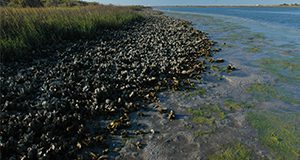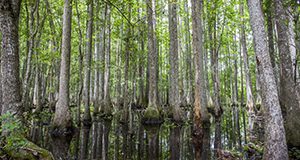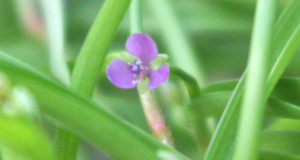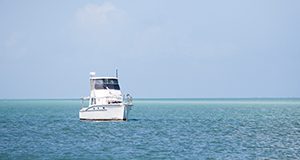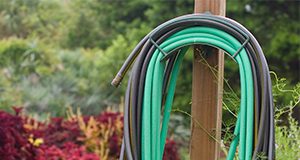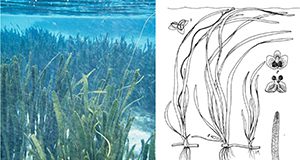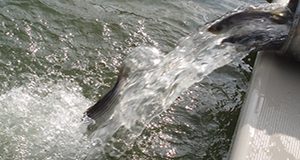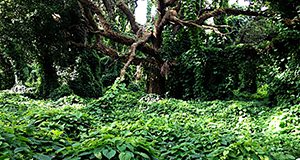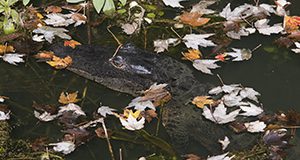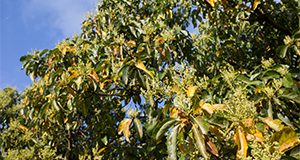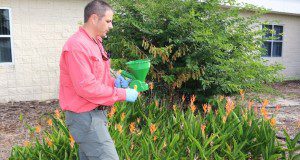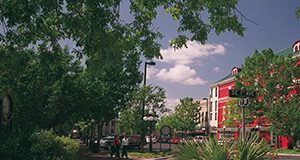This 10-page document is the eleventh lesson in the Cetaceans 4th Grade Curriculum. It contains information that will help students learn about North Atlantic right whale life history. Written by Ruth Francis-Floyd and Maia Patterson McGuire, and published by the UF/IFAS Veterinary Medicine–Large Animal Clinical Sciences Department, June 2019.
http://edis.ifas.ufl.edu/vm236
Category: Environment
Bioplastics: a better option for the environment?
Most modern-day plastics are made from petroleum, but several different types of plastics are made from plant or even bacterial sources. This 4-page fact sheet written by Maia Patterson McGuire and published by the UF/IFAS School of Forest Resources and Conservation describes four types of these bioplastics and explains why, even if a bioplastic item is listed as “compostable,” a reusable, washable alternative is often the better choice.
http://edis.ifas.ufl.edu/fr418
Wetlands as a Tool for Water Treatment
Wetlands are often referred to as "nature's kidneys" because of their ability to remove pollutants from water via storage in the soil and vegetation, as well as through losses to the atmosphere. This 7-page fact sheet written by Jay Capasso, Lisa Krimsky, and Jehangir Bhadha and published by the UF/IFAS School of Forest Resources and Conservation provides a general overview of the function and structure of large-scale treatment wetlands and the services they provide.
http://edis.ifas.ufl.edu/fr419
Biology and Management of Doveweed (Murdannia nudiflora) in Ornamental Crop Production
Doveweed is a common warm-season annual weed in Florida landscapes, container nurseries, and other agricultural production systems. This new 5-page article is written for green industry professionals and others to aid in the identification and management of doveweed in and around ornamental plants. Preemergence and postemergence herbicides are covered, as well as basic information on doveweed biology and growth. Written by Yuvraj Khamare, Chris Marble, Nathan Boyd, and Shawn Steed, and published by the UF/IFAS Environmental Horticulture Department.
https://edis.ifas.ufl.edu/ep576
Cetaceans 4th Grade Curriculum: Lesson 14: How Do Right Whales Communicate?
This 3-page document is the fourteenth lesson in the Cetaceans 4th Grade Curriculum. It contains information that will help students learn how baleen whales use sound to communicate, and how human-created noise in the ocean may affect their ability to do so. Written by Maia Patterson McGuire and Ruth Francis-Floyd, and published by the UF/IFAS Veterinary Medicine–Large Animal Clinical Sciences Department, June 2019.
http://edis.ifas.ufl.edu/vm239
Cetaceans 4th Grade Curriculum: Lesson 17: How Can We Reduce Threats to North Atlantic Right Whales?
This 13-page document is the seventeenth lesson in the Cetaceans 4th Grade Curriculum. It contains information that will help students learn about ways to minimize ship strikes and whale entanglements. Written by Maia Patterson McGuire and Ruth Francis-Floyd, and published by the UF/IFAS Veterinary Medicine–Large Animal Clinical Sciences Department, June 2019.
http://edis.ifas.ufl.edu/vm242
Cetaceans 4th Grade Curriculum: Lesson 10: Summarizing What We Know about Cetaceans
This 5-page document is the tenth lesson in the Cetaceans 4th Grade Curriculum. It contains information that will help students learn about different types of poetry and write poems to express what they know about whales and dolphins. Written by Maia Patterson McGuire and Ruth Francis-Floyd, and published by the UF/IFAS Veterinary Medicine–Large Animal Clinical Sciences Department, June 2019.
http://edis.ifas.ufl.edu/vm235
Cetaceans 4th Grade Curriculum: Lesson 18: Bringing It All Together
This 6-page document is the eighteenth lesson in the Cetaceans 4th Grade Curriculum. It contains information that will help students develop persuasive essays and corresponding presentations about North Atlantic right whales. Written by Maia Patterson McGuire and Ruth Francis-Floyd, and published by the UF/IFAS Veterinary Medicine–Large Animal Clinical Sciences Department, June 2019.
http://edis.ifas.ufl.edu/vm243
Cetaceans 4th Grade Curriculum: Lesson 15: Technology and North Atlantic Right Whales
This 6-page document is the fifteenth lesson in the Cetaceans 4th Grade Curriculum. It contains information and activities that will help students learn the ways that technology is being used to study North Atlantic right whales. Written by Maia Patterson McGuire and Ruth Francis-Floyd, and published by the UF/IFAS Veterinary Medicine–Large Animal Clinical Sciences Department, June 2019.
http://edis.ifas.ufl.edu/vm240
Cetaceans 4th Grade Curriculum: Lesson 5: Scientific Names: Understanding Where Those Funny Words Come from
This 7-page document is the fifth lesson in the Cetaceans 4th Grade Curriculum. It contains information and activities that will help students interpret the scientific names of certain whales and dolphins. Written by Maia Patterson McGuire and Ruth Francis-Floyd, and published by the UF/IFAS Veterinary Medicine–Large Animal Clinical Sciences Department, June 2019.
http://edis.ifas.ufl.edu/vm230
Economic Value of Florida Water Resources: Value of Freshwater-Based Recreational Experiences
This 8-page fact sheet written by Tatiana Borisova, Tara Wade, Xiang Bi, Kurt Oehlbeck, and Kelly Grogan and published by the UF/IFAS Food and Resource Economics Department is part 3 of the series “Economic Value of Florida Water Resources.” It uses Florida-based economic studies to provide natural resource professionals and interested citizens with information regarding the value of water-based tourism and recreation in Florida.
http://edis.ifas.ufl.edu/fe1067
Who Is Interested in Purchasing Smart Irrigation Systems?
Water scarcity concerns have led to revolutionary new smart technologies for residential landscape irrigation, including evapotranspiration and soil-moisture sensor systems. The adoption of smart irrigation technologies into residential landscapes, however, has been slow. This 7-page publication written by Hayk Khachatryan, Alicia Rihn, Caroline R. Warwick, and Michael Dukes and published by the UF/IFAS Food and Resource Economics Department provides an overview of how different consumer groups perceive smart irrigation technology and the best promotions to encourage smart irrigation adoption in home landscapes. It is designed for landscapers, irrigation specialists, and marketing professionals who work with and are interested in promoting smart irrigation technologies to end consumers. Firms can use the results to tailor marketing strategies to target relevant customer segments and create promotions to encourage homeowners to adopt water-saving irrigation technologies.
http://edis.ifas.ufl.edu/fe1069
Tapegrass, Eelgrass, or Wild Celery (Vallisneria americana Michaux): A Native Aquatic and Wetland Plant
This 5-page document describes the main features of tapegrass and summarizes important habitat requirements for its growth and restoration. Written by Mohsen Tootoonchi, Lyn A. Gettys, and Jehangir H. Bhadha, and published by the UF/IFAS Agronomy Department, September 2019.
http://edis.ifas.ufl.edu/ag437
How to Define Successful Stocking of Florida’s Freshwater Recreational Fisheries
Florida researchers and fisheries management agencies have conducted years of research on stocking, a common and popular but intensive option for improving recreational fisheries, but determining how successful it has been in Florida has been challenging. This 7-page fact sheet written by Edward V. Camp, Rick Stout, Nick Trippel, Jon Fury, Stasey Whichel, and Kai Lorenzen and published by the UF/IFAS School of Forest Resources and Conservation Program in Fisheries and Aquatic Sciences reviews recent scientific literature to describe the benefits of stocking and the potential drawbacks to create useful definitions of stocking success, as well as metrics for evaluation that are specifically tailored for Florida. Well-planned stocking can not only improve recreational fishing but achieve broader research and management goals and help us to understand how fisheries function, both biologically and socioeconomically.
http://edis.ifas.ufl.edu/fa216
Lost in the Weeds?: A Comprehensive Guide to Florida's Many Non-Native Plant Lists
Because researchers and land managers in Florida have been dealing with invasive species for decades, there is an abundance of resources available to the public regarding invasive species. Sometimes, the volume of available information can be confusing. This 6-page document aims to inform the general public, land managers, researchers, local and state policy makers, and others who seek guidance in accessing regulatory and nonregulatory non-native plant lists in the state of Florida. This publication explains the origins of the lists, meaning of inclusion on a particular list, and ways to access each of the lists. Written by Deah Lieurance and Lyn A. Gettys, and published by the UF/IFAS Agronomy Department, August 2019.
http://edis.ifas.ufl.edu/ag436
Valuing Florida’s Water Resources: Ecosystem Services Approach
This 6-page fact sheet written by Tatiana Borisova, Tara Wade, Xiang Bi, Kurt Oehlbeck, and Kelly Grogan and published by the UF/IFAS Food and Resource Economics Department defines the term “ecosystem services” and presents examples of ecosystem services provided by water resources. It explains three values people assign to water resources and presents a brief overview of the methods that economists employ to measure the value of water.
http://edis.ifas.ufl.edu/fe1064
The Value of Tropical Plant Diversity
This new 5-page document discusses plant diversity at the UF/IFAS Tropical Research and Education Center, environmental factors and human activities affecting these plants, assemblages of species based on levels of disturbance, human choice, and other factors, and the diverse needs these plants meet. Written by Cliff G. Martin and Zachary T. Brym, and published by the UF/IFAS Agronomy Department, June 2019.
http://edis.ifas.ufl.edu/ag435
Florida Homeowner Herbicide Guide: Considerations, Applications, and Selection
While some people opt for professional lawn maintenance companies, some homeowners may wish to perform their own landscape pest control in order to save money, to have more control of what is applied, or simply because they enjoy it. This EDIS publication is for Florida gardeners, horticulturalists and homeowners who want to utilize herbicides to control weeds in their landscape. This new 9-page publication of the UF/IFAS Environmental Horticulture Department discusses common herbicides available at retail stores and how homeowners can use these them safely and effectively. Written by Chris Marble.
https://edis.ifas.ufl.edu/ep575
Valuing Florida Water Resources: Prices of Waterfront Properties
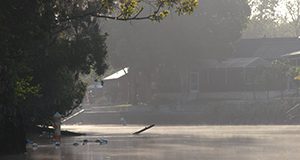
This 9-page fact sheet written by Tatiana Borisova, Xiang Bi, Tara Wade, and Kurt Oehlbeck and published by the UF/IFAS Food and Resource Economics Department explores the relationship between water quality and sale prices of waterfront properties, that is, the amenity value provided by water resources to waterfront communities. Being near to water to water generally increases the value of a residential property. However, poor water quality may decrease waterfront property prices. In other words, investments in restoring water quality can translate into increases in property value and tax collection.
http://edis.ifas.ufl.edu/fe1062/p>
Executive Summary of Gainesville’s Urban Forest in 2016
This 2-page fact sheet written by Michael G. Andreu, Caroline A. Hament, David A. Fox, and Robert J. Northrop and published by the UF/IFAS School of Forest Resources and Conservation describes a 2016 ecological assessment of the urban forest in the city of Gainesville, FL. It provides a detailed look into some of the economic and ecological values of the forest to enhance understanding and improve urban forest policies, planning, and management, as well as to provide empirical data for the inclusion of trees within environmental regulations.
http://edis.ifas.ufl.edu/fr417
